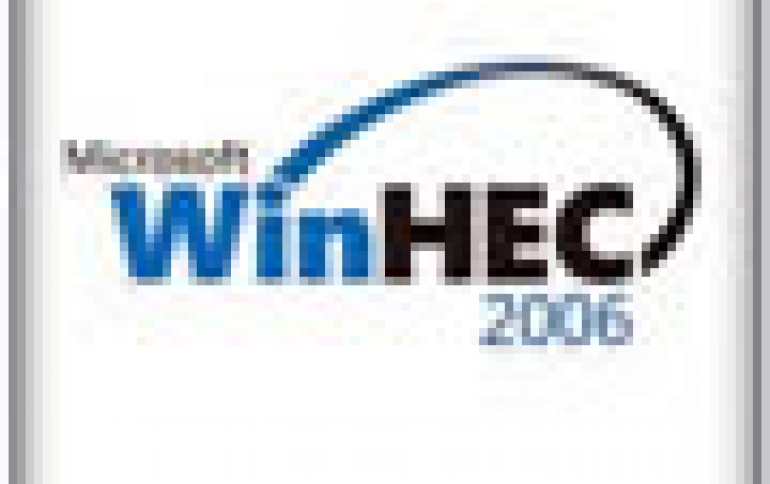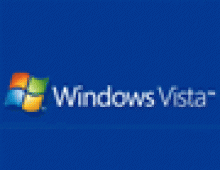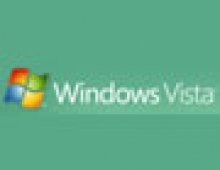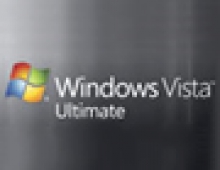
Microsoft Releases Vista, Longhorn, Office Betas
Microsoft launched its second major test version of the Windows Vista operating system on Tuesday as a senior executive said he was "confident" the company will meet its targeted release date.
Microsoft simultaneously placed its bet on the release on Tuesday of beta versions of its three major upcoming software releases -- Windows Vista, Office 2007 and Windows Server, code-named Longhorn.
Microsoft's money is on releasing all the beta products at once to allow customers to see how the products can be used together to improve visibility into business processes, worker productivity and collaboration, and data management across an organization, Gates said at his keynote speech at WinHEC.
Microsoft said that Beta 2 versions of Vista and Longhorn Server are available now to developers and those in its technical beta programs. WinHEC attendees will also get DVDs with the software. Microsoft said Beta 2 is available now via free download in English, French, German, Japanese and Spanish.
Also during Gates' keynote, Microsoft showed the first demo of the hypervisor virtualization technology that will be available for the next version of Longhorn. Hypervisor allows different OSes, such as Windows and Linux, to run on one server. Microsoft on Monday said it would make that technology available natively for Longhorn no more than six months after the release of that version of Windows Server.
Microsoft originally targeted a 2005 launch for Vista, then pushed the release out to 2006 before announcing in March that Vista would again be delayed. Microsoft set a January 2007 launch for retail consumers and it pushed back the launch of Office 2007 to move together with Vista.
Long-time Windows chief Jim Allchin said Microsoft is confident it will meet its launch target, even though other Windows releases have undergone a longer gap between second test release and the start of production.
Windows Vista, Office 2007 and "Longhorn" represent a set of crucial new product releases for the company's effort to stimulate sales growth.
"Each of these is a very important product," said Microsoft Chairman Bill Gates at the Windows Hardware Engineering Conference, adding that they were the company's "three most important products."
Allchin, who announced last year that he planned to retire once Vista was complete, said the company is better able to track the trouble spots users encounter within the Vista test and assign engineers to fix the bugs.
Microsoft has "thousands" of engineers working around the clock to fix problems. Allchin said the company aims to improve Vista's compatibility with certain applications, performance and the ability of users to upgrade from Windows XP.
Allchin said he would not hesitate delaying the release of Vista again if the product's quality were not up to par.
"We took a lot of pain for moving the date before, but quality will remain the top thing. However, we feel very good about where we are at," said Allchin.
Vista Basics
Vista will have three faces, depending on both the hardware capabilities of your PC and which of the six core versions of the OS you're running. The much vaunted Aero interface, with its semi-transparent frames and glistening progress bars, will only appear on PCs with sufficiently robust hardware that run either one of the two corporate-focused versions--Vista Business and Vista Enterprise--or one of the top-of-the-line consumer-oriented Vista Home Premium and Vista Home Ultimate. Microsoft also says that Aero will be more reliable than XP's user interface.
Low-end PCs running Vista Home Basic or Vista Starter editions will run a less glamorous Basic interface. But if you're running either of these lower end editions on a PC that is capable of Aero graphics, you'll get what Microsoft calls the Standard interface, which is Basic with some Aero features such as the increased reliability.
Along with its new look, Vista is introducing a new Microsoft document format, XPS (XML Paper Specification). Documents created with XPS can be shared with people who don't have the originating application but do have an XPS viewer; Microsoft showed an XPS document being viewed in Internet Explorer. While not nearly as full featured as Adobe's popular PDF format, XPS is intended primarily to speed up and improve the quality of printing.
Presentations at the Vista reviewer's workshop focused on several general areas where Microsoft believes the OS will save businesses time and money, most of which it has touted throughout the development process.
Among other things, Microsoft is pushing hard to discourage the widespread practice of having users logged in with administrative privileges, which lets them install software and perform all sorts of other activities that can put a system at risk. The reason IT staffers allow people to log in as administrators is because in Windows XP all other users are barred from performing even some extremely basic tasks, such as changing mouse settings.
Vista will only have two classes of users: administrators and standard users. But standard users will at least be able to make more routine changes--for example, change keyboard settings or install a mouse.
In Vista, Microsoft has changed the user authentication procedures so that users can add third-party alternatives--such as biometric devices--which can cause conflicts in Windows XP. Internet Explorer 7 in Vista sports an array of defenses, including the ability to divert efforts to change the Windows Registry or perform drive-by software installations to temporary folders.
Vista's firewall blocks inbound traffic except where users have specified exceptions; outbound traffic is permitted by default except where rules call for blocking. The OS wards off rootkits --spyware that evades usual means of detection such as showing up as a Windows process--with a feature called kernel patch protection. And the new Windows Defender anti-spyware software included in Vista can scan download for spyware, which standard users are allowed to delete.
Finally, the 64-bit version of Vista will not allow use of unsigned device drivers--drivers that Microsoft has not certified.
Microsoft has introduced some performance-enhancing technologies in Vista, including a feature called Windows ReadyBoost, which supports use of a USB 2.0 thumb drive as memory cache (cheaper than adding RAM). The new SuperFetch feature is supposed to speed up data access by intelligent memory management based on your PC usage patterns.
Vista will have some less business-oriented goodies, too, including its own version of Windows Media Player 11 with the new Urge music service and the new Photo Gallery, which lets you build photo montages complete with music and effects.
Microsoft's money is on releasing all the beta products at once to allow customers to see how the products can be used together to improve visibility into business processes, worker productivity and collaboration, and data management across an organization, Gates said at his keynote speech at WinHEC.
Microsoft said that Beta 2 versions of Vista and Longhorn Server are available now to developers and those in its technical beta programs. WinHEC attendees will also get DVDs with the software. Microsoft said Beta 2 is available now via free download in English, French, German, Japanese and Spanish.
Also during Gates' keynote, Microsoft showed the first demo of the hypervisor virtualization technology that will be available for the next version of Longhorn. Hypervisor allows different OSes, such as Windows and Linux, to run on one server. Microsoft on Monday said it would make that technology available natively for Longhorn no more than six months after the release of that version of Windows Server.
Microsoft originally targeted a 2005 launch for Vista, then pushed the release out to 2006 before announcing in March that Vista would again be delayed. Microsoft set a January 2007 launch for retail consumers and it pushed back the launch of Office 2007 to move together with Vista.
Long-time Windows chief Jim Allchin said Microsoft is confident it will meet its launch target, even though other Windows releases have undergone a longer gap between second test release and the start of production.
Windows Vista, Office 2007 and "Longhorn" represent a set of crucial new product releases for the company's effort to stimulate sales growth.
"Each of these is a very important product," said Microsoft Chairman Bill Gates at the Windows Hardware Engineering Conference, adding that they were the company's "three most important products."
Allchin, who announced last year that he planned to retire once Vista was complete, said the company is better able to track the trouble spots users encounter within the Vista test and assign engineers to fix the bugs.
Microsoft has "thousands" of engineers working around the clock to fix problems. Allchin said the company aims to improve Vista's compatibility with certain applications, performance and the ability of users to upgrade from Windows XP.
Allchin said he would not hesitate delaying the release of Vista again if the product's quality were not up to par.
"We took a lot of pain for moving the date before, but quality will remain the top thing. However, we feel very good about where we are at," said Allchin.
Vista Basics
Vista will have three faces, depending on both the hardware capabilities of your PC and which of the six core versions of the OS you're running. The much vaunted Aero interface, with its semi-transparent frames and glistening progress bars, will only appear on PCs with sufficiently robust hardware that run either one of the two corporate-focused versions--Vista Business and Vista Enterprise--or one of the top-of-the-line consumer-oriented Vista Home Premium and Vista Home Ultimate. Microsoft also says that Aero will be more reliable than XP's user interface.
Low-end PCs running Vista Home Basic or Vista Starter editions will run a less glamorous Basic interface. But if you're running either of these lower end editions on a PC that is capable of Aero graphics, you'll get what Microsoft calls the Standard interface, which is Basic with some Aero features such as the increased reliability.
Along with its new look, Vista is introducing a new Microsoft document format, XPS (XML Paper Specification). Documents created with XPS can be shared with people who don't have the originating application but do have an XPS viewer; Microsoft showed an XPS document being viewed in Internet Explorer. While not nearly as full featured as Adobe's popular PDF format, XPS is intended primarily to speed up and improve the quality of printing.
Presentations at the Vista reviewer's workshop focused on several general areas where Microsoft believes the OS will save businesses time and money, most of which it has touted throughout the development process.
Among other things, Microsoft is pushing hard to discourage the widespread practice of having users logged in with administrative privileges, which lets them install software and perform all sorts of other activities that can put a system at risk. The reason IT staffers allow people to log in as administrators is because in Windows XP all other users are barred from performing even some extremely basic tasks, such as changing mouse settings.
Vista will only have two classes of users: administrators and standard users. But standard users will at least be able to make more routine changes--for example, change keyboard settings or install a mouse.
In Vista, Microsoft has changed the user authentication procedures so that users can add third-party alternatives--such as biometric devices--which can cause conflicts in Windows XP. Internet Explorer 7 in Vista sports an array of defenses, including the ability to divert efforts to change the Windows Registry or perform drive-by software installations to temporary folders.
Vista's firewall blocks inbound traffic except where users have specified exceptions; outbound traffic is permitted by default except where rules call for blocking. The OS wards off rootkits --spyware that evades usual means of detection such as showing up as a Windows process--with a feature called kernel patch protection. And the new Windows Defender anti-spyware software included in Vista can scan download for spyware, which standard users are allowed to delete.
Finally, the 64-bit version of Vista will not allow use of unsigned device drivers--drivers that Microsoft has not certified.
Microsoft has introduced some performance-enhancing technologies in Vista, including a feature called Windows ReadyBoost, which supports use of a USB 2.0 thumb drive as memory cache (cheaper than adding RAM). The new SuperFetch feature is supposed to speed up data access by intelligent memory management based on your PC usage patterns.
Vista will have some less business-oriented goodies, too, including its own version of Windows Media Player 11 with the new Urge music service and the new Photo Gallery, which lets you build photo montages complete with music and effects.



















